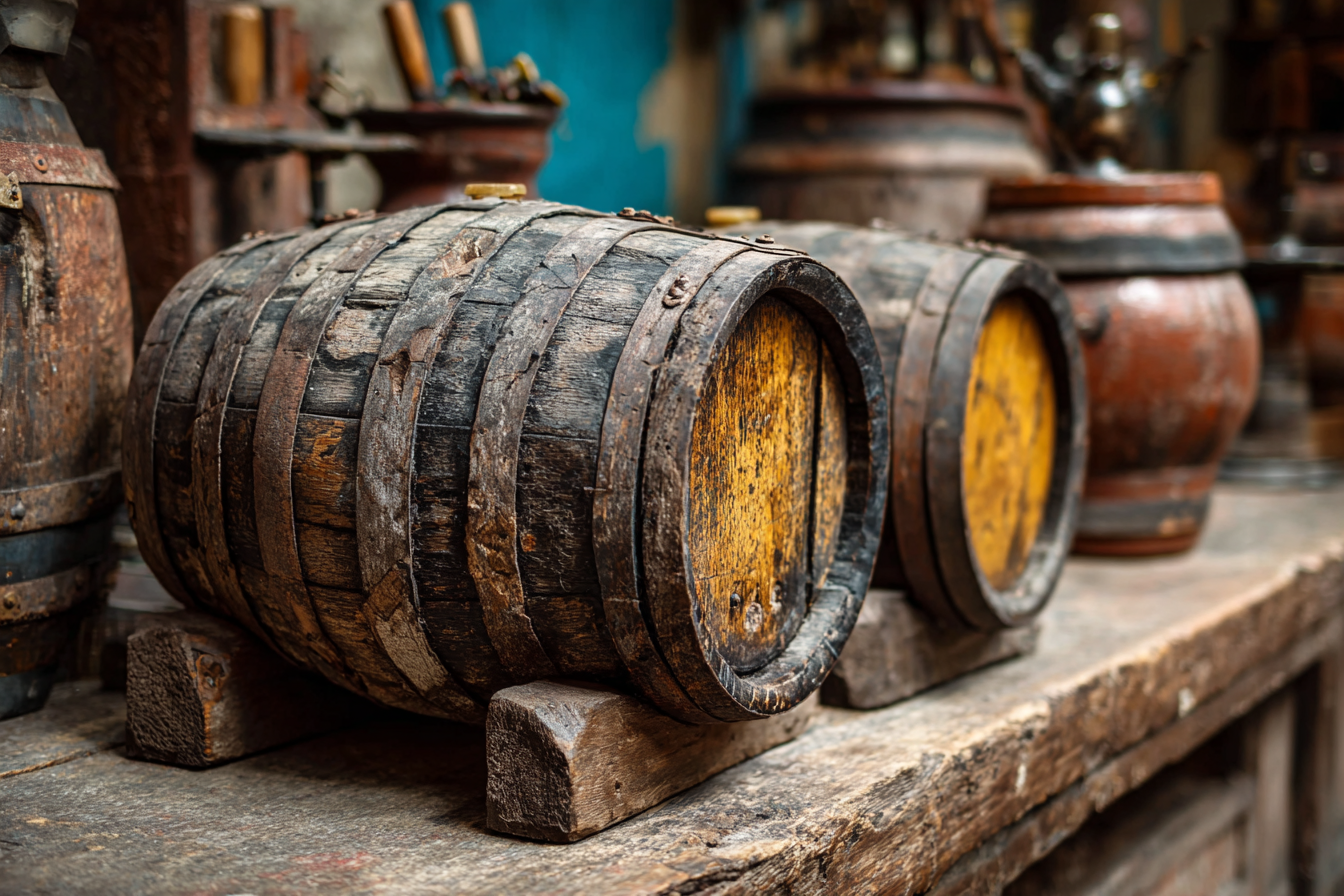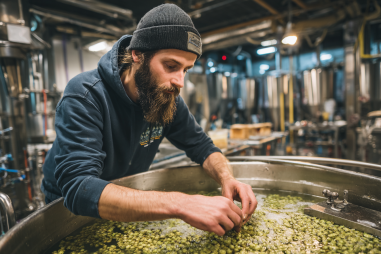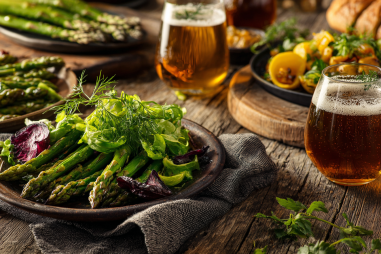Barrel-aged barleywine embodies a unique intersection of tradition, craftsmanship, and innovation in the world of beer. Rooted in centuries-old brewing practices yet constantly evolving through modern artistry, this intense and flavorful beer style has captivated enthusiasts worldwide. To truly appreciate barrel-aged barleywine, it’s worth exploring its rich history—from its British origins and the early use of wooden barrels in beer maturation to the influential American craft beer movement that embraced and revolutionized barrel aging as an art form.
Origins of Barleywine Style
The barleywine style has its roots in Britain, tracing back to the strong ales brewed in the late 18th and early 19th centuries. Despite the name “barleywine,” this beer is not a wine, but rather a beer with wine-like strength—often boasting alcohol by volume (ABV) ranging from 8% to over 12%. Early British brewers sought to create a strong, malty brew that could be aged longer than typical beers and enjoyed slowly, much like a fine wine.
Initially referred to as “stock ales” or “strong old ales,” barleywine was prized for its rich malt character, complex sweetness, and warming qualities. The name “barleywine” itself is credited to British beer writer Michael Jackson in the 1960s, who popularized the term to describe this potent style that bridges the gap between beer and wine in strength and drinkability.
Early Use of Barrel Aging in Beer
Before modern stainless steel tanks and refrigeration, wooden barrels were the primary vessels used for fermenting, maturing, and transporting beer. Barrel aging played a crucial role in the development of many beer styles, including barleywine. The porous nature of wood allowed subtle oxygenation and interaction with wood tannins, while barrels previously used for spirits like whiskey or sherry added complex flavors.
In early brewing traditions, barrel aging was a practical necessity rather than a craft choice—brewers relied on what was available. Over time, however, it became clear that barrel aging could transform a beer’s flavor profile, adding layers of complexity such as vanilla, oak, caramel, and even oxidative notes. This process was especially well suited to strong ales like barleywine due to their robust malt backbone and higher alcohol content, which could withstand and evolve with extended aging.
Evolution of Barrel-Aged Barleywine
While traditional British barleywines were often aged in barrels, it wasn’t until the latter half of the 20th century that barrel aging became a deliberate stylistic choice rather than a mere storage practice. The slow oxidation and extraction of wood characteristics from barrels began to be embraced as an artistic opportunity.
In the 1970s and 1980s, pioneering brewers started experimenting more thoughtfully with barrel-aged barleywines, often using barrels that previously held bourbon, whiskey, or other spirits. This aging process imparted complex flavor notes such as oak, vanilla, coconut, char, and even hints of the original spirit, enriching the malt-forward barleywine base.
The evolution of barrel-aged barleywine also saw brewers varying barrel types and durations, creating a spectrum of interpretations from lightly aged versions that preserved fresh maltiness to heavily barrel-aged expressions with intricate, layered complexity.
Influence of American Craft Beer Movement
The American craft beer revolution of the 1980s and 1990s played a significant role in the rise and popularization of barrel-aged barleywine. Craft brewers embraced innovation and experimentation, making barrel aging a showcase technique to elevate their beers beyond conventional limits.
In particular, American breweries saw barrel-aged barleywine as a canvas to merge bold malty sweetness with the rich character of spirit barrels, especially bourbon barrels, which were widely available due to the thriving American whiskey industry. This led to the creation of highly sought-after barrel-aged barleywines that featured deep, luscious layers of caramel, toffee, oak, and spirit flavors balanced by residual sweetness and warming alcohol.
This movement also encouraged limited releases, special editions, and collaborations around barrel-aged barleywine, turning it into a cult favorite among beer enthusiasts who cherished its depth and complexity.
Notable Breweries and Milestones
Several breweries have become synonymous with barrel-aged barleywine, marking important milestones in the style’s history:
- Sierra Nevada Brewing Co. – Known for their innovative use of barrel aging in the 1990s, Sierra Nevada helped introduce American drinkers to the possibilities barrel-aged barleywine could offer.
- Anchor Brewing Company – An early pioneer in strong ales and barrel aging, Anchor’s Old Foghorn barleywine dates back several decades, showcasing masterful aging techniques.
- Goose Island Beer Co. – Their Bourbon County Brand Barleywine, aged in bourbon barrels, gained legendary status and influenced countless brewers nationwide.
- The Bruery – Known for pushing boundaries, The Bruery has released numerous barrel-aged barleywines with complex blends and creative barrel programs.
Each of these breweries has contributed to shaping public appreciation for barrel-aged barleywine, inspiring many others to explore the style’s potential.
How History Shapes Modern Brewing Practices
The historical journey of barrel-aged barleywine profoundly influences how brewers today approach the style. Modern craft brewers often combine respect for traditional methods with cutting-edge techniques:
- Selective Barrel Programs: Brewers source diverse barrel types — such as bourbon, wine, rum, and even tequila barrels — to add specific flavor profiles to the barleywine.
- Controlled Aging: Modern climate-controlled barrel warehouses and aging rooms enable precise maturation conditions to optimize flavor development.
- Blending: Many breweries age barleywines in multiple barrels and blend to achieve balance and complexity, echoing winemaking techniques.
- Limited Edition Releases: By creating special barrel-aged barleywine batches, breweries build excitement and appreciation among enthusiasts willing to explore unique, bold flavors.
This blending of history and innovation keeps barrel-aged barleywine relevant and exciting to both brewers and consumers, ensuring its continued evolution.
Appreciating the Tradition and Innovation of Barrel-Aged Barleywine
Barrel-aged barleywine offers a fascinating window into beer’s rich and evolving heritage. Its origins in British strong ales laid a sturdy foundation of malt character and strength, while early barrel aging techniques introduced subtle transformations through wood and spirit influences. The American craft beer movement’s embrace of barrel-aging elevated the style into a celebrated art form, inspiring brewers to experiment boldly with barrels and maturation.
Today, each bottle of barrel-aged barleywine tells a story—a blend of tradition and innovation that invites drinkers to savor complexity, depth, and history. Whether enjoyed fresh or aged further in your cellar, barrel-aged barleywine stands as a testament to the creativity and enduring passion of brewers worldwide.







